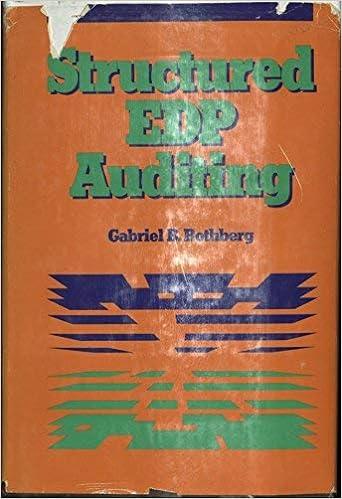Use the Present Value of $1 table to determine the present value of $1 received one year from now. Assume an 8% interest rate. Use the same table to find the present value of $1 received two years from now. Continue this process for a total of five years. Round to three decimal places Requirement 1. What is the total present value of the cash flow5 recelved over the five-year period? Calculate the total present value of $1 received each year. (Round to three decimal places, X.XXX.) Requirement 2. Could you characterize this stream of cash flows as an annuity? Why or why not? The stream of cash flows an annuity because it is a stream of cash payments made at time intervals: Requirement 3. Use the Present Value of Ordinary Annuity of $1 table to determine the present value of the same stream of cash flows. Compare your results to your answer to Requirement 1. (Round to three decimal places, X.XXX.) (Click the icon to view Present Value of Ordinary Annuity of \$1 table.) Requirement 2. Could you characterize this stream of cash flows as an annuity? Why or why not? The stream of cash flows an annuity because it is a stream of cash payments made at time intervals. Requirement 3. Use the Present Value of Ordinary Annuity of $1 table to determine the present value of the same stroam of cash flows. Compare your results to your answer to Requirement 1. (Round to three decimal places, X.XXX.) (Click the icon to view Present Value of Ordinary Annuity of $1 table.) The present value of an annuity of $1 received each year for five years, at 8% per year is The sum of the present values in Requirement 1 the present value calculated with the Present Value of Ordinary Annuity of $1 table. Requirement 4. Explain your findings. This exercise shows how Annuity PV factors of the PV factors found in the Present Value of $1 tables. Requirements 1. What is the total present value of the cash flows received over the five-year period? 2. Could you characterize this stream of cash flows as an annuity? Why or why not? 3. Use the Present Value of Ordinary Annuity of $1 table to determine the present value of the same stream of cash flows. Compare your results to your answer to Requirement 1. 4. Explain your findings. Use the Present Value of $1 table to determine the present value of $1 received one year from now. Assume an 8% interest rate. Use the same table to find the present value of $1 received two years from now. Continue this process for a total of five years. Round to three decimal places Requirement 1. What is the total present value of the cash flow5 recelved over the five-year period? Calculate the total present value of $1 received each year. (Round to three decimal places, X.XXX.) Requirement 2. Could you characterize this stream of cash flows as an annuity? Why or why not? The stream of cash flows an annuity because it is a stream of cash payments made at time intervals: Requirement 3. Use the Present Value of Ordinary Annuity of $1 table to determine the present value of the same stream of cash flows. Compare your results to your answer to Requirement 1. (Round to three decimal places, X.XXX.) (Click the icon to view Present Value of Ordinary Annuity of \$1 table.) Requirement 2. Could you characterize this stream of cash flows as an annuity? Why or why not? The stream of cash flows an annuity because it is a stream of cash payments made at time intervals. Requirement 3. Use the Present Value of Ordinary Annuity of $1 table to determine the present value of the same stroam of cash flows. Compare your results to your answer to Requirement 1. (Round to three decimal places, X.XXX.) (Click the icon to view Present Value of Ordinary Annuity of $1 table.) The present value of an annuity of $1 received each year for five years, at 8% per year is The sum of the present values in Requirement 1 the present value calculated with the Present Value of Ordinary Annuity of $1 table. Requirement 4. Explain your findings. This exercise shows how Annuity PV factors of the PV factors found in the Present Value of $1 tables. Requirements 1. What is the total present value of the cash flows received over the five-year period? 2. Could you characterize this stream of cash flows as an annuity? Why or why not? 3. Use the Present Value of Ordinary Annuity of $1 table to determine the present value of the same stream of cash flows. Compare your results to your answer to Requirement 1. 4. Explain your findings









